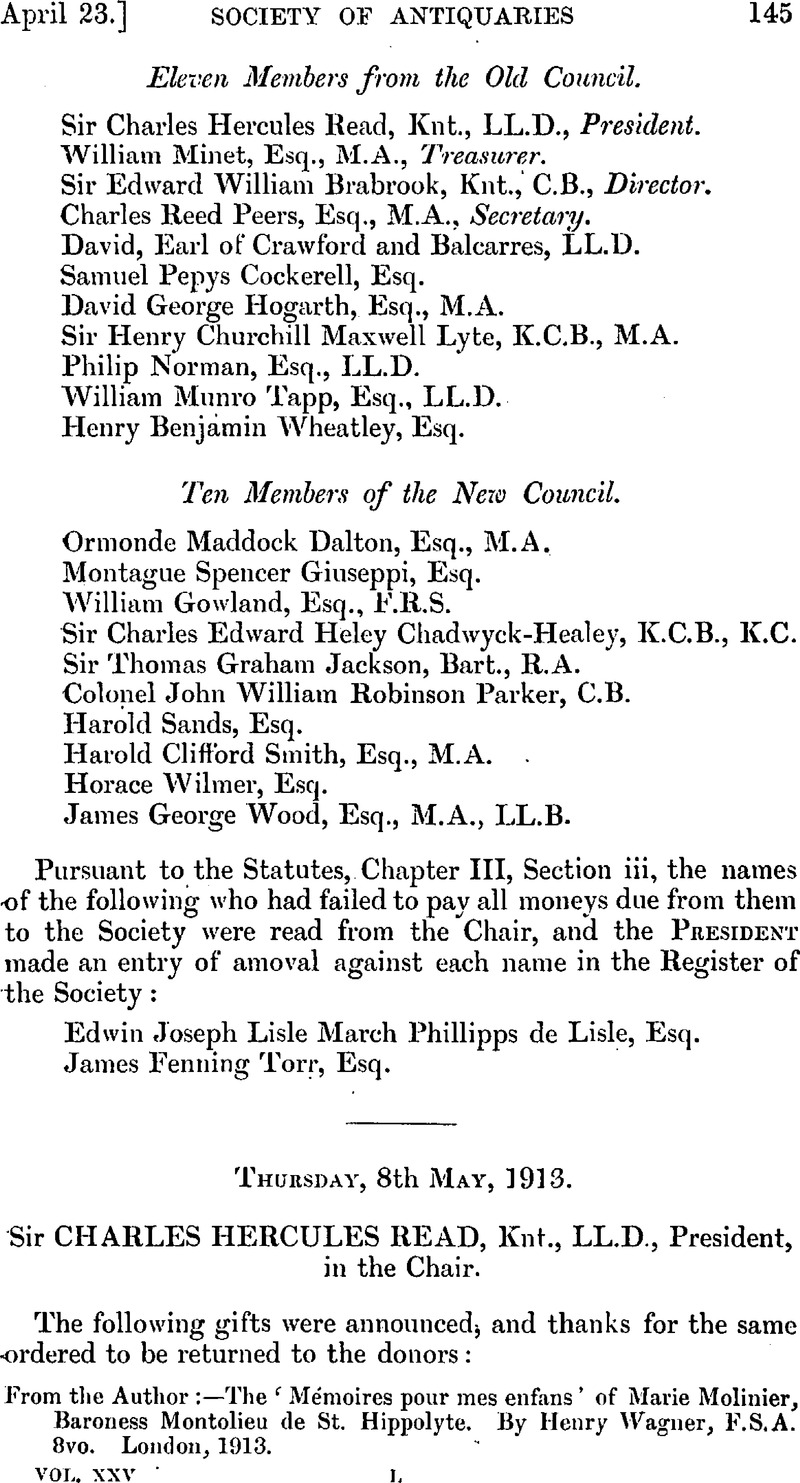No CrossRef data available.
Article contents
Thursday, 8th May, 1913
Published online by Cambridge University Press: 10 May 2010
Abstract

- Type
- Proceedings
- Information
- Copyright
- Copyright © The Society of Antiquaries of London 1913
References
page 148 note 1 The area uncovered in 1912 showed at several points clear traces of earlier occupation, going back to the Flavian age, both floors and walls and pottery and coins dating them, but no definite plans could be recovered to indicate their character or extent.
page 149 note 1 It will be understood that the laying out of this, as of most Roman buildings, is not mathematically true and that the hall is only approximately rectangular.
page 149 note 2 Doclea had two small temples of this kind which were examined in 1893 by Mr. J. A. R. Munro and some other Oxford scholars (Archaeologia, lv. 54). Fuller details have now been obtained by Austrian explorers (Sticotti, Die römische Stadt Doclea, Wien, 1913, pp. 65 foll.).
page 151 note 1 The large irregular flags which form the foundation of the walls of this building jut out in such a way as to suggest two arches at the points where arch ? are marked on fig. 4. In that case, the two sides of this half of the building may have been roofed, though not perhaps completely closed in, while the central part was wholly open.
page 152 note 1 For the Castlesteads stone see CIL. vii. 896, as corrected in Eph. Epigr. ix. 605 ; for the African inscription, Dessau, Inscr. Select. 446. It should, however, be added that Disciplina is represented on coins of Hadrian and possibly of Pius, and that an altar to her was dug up from the well of the Headquarters building at Birrens in 1895, which is unlikely to be of so late a date as a.d. 200. (See Eph. Epigr. ix. 615, and these Proceedings, xvi. 195.)
page 152 note 2 Domaszewski, Religion des römischen Heeres, pp. 7, 49.




